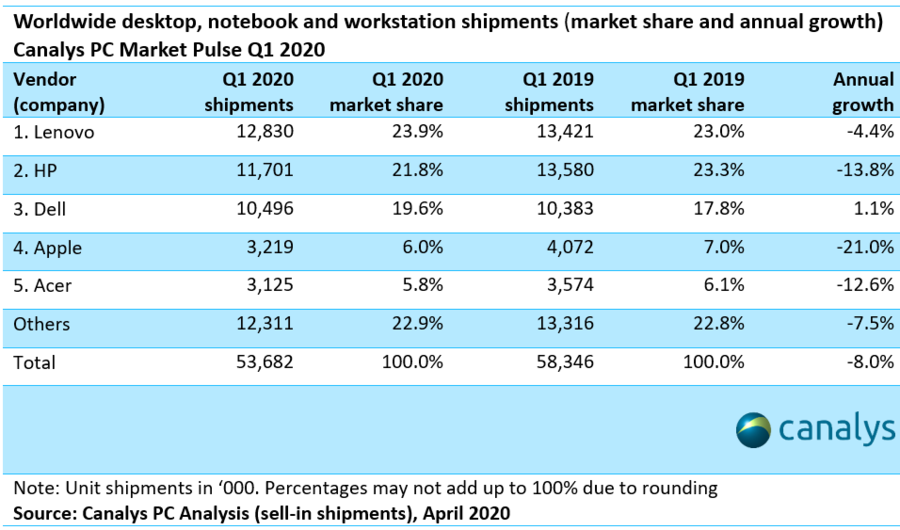Canalys sees PC demand surged in Q1; however, shipments delayed due to supply issues
As employees shifted from office to home and students shifted to being taught online, demand for fresh PCs rose in Q1 of 2020.
Still, Canalys noticed that shipments fell 8% despite this, due to COVID-19 associated supply chain difficulties.
The Impact Of The Drop
The 8% fall was the most damaging since 2016 when shipments fell 12%, according to the company.
Businesses were looking to acquire new machines into the hands of workers who usually operated on desktop machines in the office, while parents were purchasing machines for kids suddenly attending school online.
Rushabh Doshi, investigation director at Canalys, states that products were floating off the racks in Q1.
Still, the PC producers could not keep up with demand as supplies were restricted due to several factors.
PC makers began 2020 with a restrained supply of Intel processors, generated by a botched transition to 10nm nodes.
This was increased when companies in China were incapable of reopening after the Lunar New Year holidays.
“The slowdown in supply met with expedited demand, as companies were suddenly made to provide a new remote workforce, putting urgent orders for tens of thousands of PCs.
Kids, too, wanted their PCs, as schools shut and teachings went online,” Doshi said in a statement.

Companies That Dominated The Market
Lenovo and HP held the lion’s part of the PC market in Q1 with 23.9% and 21.8% part respectively.
Dell was third with 19.6%.
Apple was quite behind in fourth place, with only 6% of worldwide market share.
Just Dell predicted a definite increase with a modest 1.1% yearly rate.
All others were predicted to be negative with Apple predicting the most definite drop at -21%.
The great news is that from an income perspective, at least for the short term, these businesses could charge higher prices because of high demand and low supply.
Still, overall the year seems low for PC makers, as Canalys foretells that the balance of the year will see an additional drop in sales as businesses cut back on buying.
Customers are also expected to limit purchases with so much financial risk and demand satisfied for the short term.
SEE ALSO: The COVID-19 pandemic is now reshaping tech’s misinformation disaster
For more information and the latest tech news, keep reading iTMunch.





